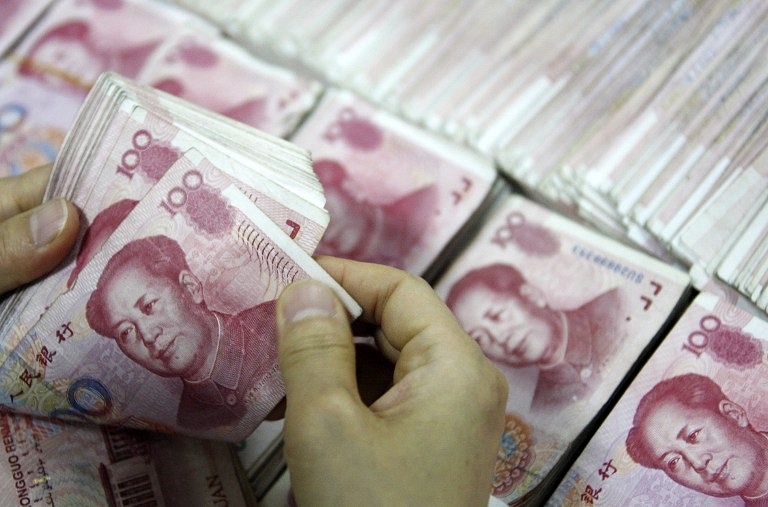Economy
Whatever Beijing May Say, But A Credit Downgrade Right After The OBOR Jamboree Is Embarrassing
- Moody’s downgrade of China’s sovereign debt might not be a surprise but its timing was unexpected. If anything, the surprise is that it took so long for them to act.

International rating agency Moody’s downgraded China’s sovereign credit rating.
Moody’s downgraded China’s sovereign credit rating from Aa3 to A1 and upgraded its outlook for the rating to ‘stable’ from ‘negative’. That is, it does not expect to downgrade China again anytime soon.
As soon as it happened, many dismissed it. The Chinese government does not borrow in foreign currency and hence, a credit rating action by an international agency does not really matter. Well, not so fast. Even Indian sovereign does not borrow in foreign currency. Yet, its credit rating is just above junk bond rating and is often cited in many commentaries on India’s fiscal health. So, let us not be too nonchalant about it, on behalf of China. Certainly, the Chinese government won’t be.
The fact is that this is the first China rating change by Moody’s in nearly thirty years. It does make people sit up and take notice. Second, China has just come off the One Belt One Road conference where it assembled many foreign leaders. It was almost an emperor’s durbar with the little chieftains in attendance. Hence, to have this happen within a week of that jamboree is a bit of an embarrassment that China could have done without.
For China, ‘face’ matters a lot and hence, a foreign credit rating agency from a country that is, in its view, fast losing its pre-eminence is a reminder to China that the world order had not changed yet. That would be quite annoying.
For India, it would be a bit of a Schadenfreude because India had raised questions about the debt burden it would create for the countries involved. Moody’s downgrade vindicates India in a way.
Second, Arvind Subramanian, the Chief Economic Advisor to the Government of India had been fiercely critical of the credit rating agencies for their lopsided credit rating of India and, say, China. He called the chasm between the sovereign credit ratings of both countries indefensible. India was just above junk bond rating and China’s credit rating was Aa3. He might be somewhat mollified or feeling vindicated although he was batting for an upgrade for India and not so much downgrade for China.
As for China’s economic fundamentals, they had justified more than a one-notch downgrade long time ago. In its Article IV report last year, the International Monetary Fund had pointed out that China’s ‘augmented fiscal deficit’ was slightly above 10 per cent of GDP in 2016 (p.43). Its public debt ratio too is correspondingly much larger and rising. Even then, no one has the faintest idea of how much debt China’s local governments have taken on and how much of it would devolve on Beijing.
Further, China’s banks are swimming in a sea of bad debts to local government funding vehicles, to State-owned enterprises and, further, on their part, have sold these debts as Wealth Management Products to their private clients, looking for a higher yield with no risk. Their official non-performing asset ratio is less than two per cent. But, private estimates range from 5 to 25 per cent. Fitchratings, another credit rating agency, puts it at 15 per cent. Therefore, objective fundamentals warranted a lower credit rating for China.
A colleague had a legitimate question as to why this downgrade did not come earlier, when China’s fundamentals were dodgy as in, say, at the beginning of 2016 or in August last year, etc. The answer is simple. It is that the credit rating agencies did not want to pour oil into the fire and turn China’s turbulence into a self-fulfilling rout. It is better to do it when times are quieter.
Second, the scale of the estimates being touted for the ‘One Belt One Road’ initiative might have influenced Moody’s. It is our guess. The number is variously estimated at 900 billion to 1 trillion US dollar.
Hence, this downgrade could be a pre-emptive warning.
The downgrade, while being meaningfully negative for those borrowers that rely on the sovereign rating to price their own debt, may also make the Chinese government think a bit harder about the next round of debt-funded reflation once it gets bored or frightened of the current round of de-leveraging that it is supposedly pursuing.
In all, Moody’s downgrade of China’s sovereign debt might not be a surprise but its timing was unexpected, surely. If anything, the surprise is that it took so long for them to act and the question is why only one notch down.
This article in the Wall Street Journal comparing China and Japan is a good read. Moody’s rates both countries alike now.
This piece was originally published on The Gold Standard, and has been republished here with permission.
Support Swarajya's 50 Ground Reports Project & Sponsor A Story
Every general election Swarajya does a 50 ground reports project.
Aimed only at serious readers and those who appreciate the nuances of political undercurrents, the project provides a sense of India's electoral landscape. As you know, these reports are produced after considerable investment of travel, time and effort on the ground.
This time too we've kicked off the project in style and have covered over 30 constituencies already. If you're someone who appreciates such work and have enjoyed our coverage please consider sponsoring a ground report for just Rs 2999 to Rs 19,999 - it goes a long way in helping us produce more quality reportage.
You can also back this project by becoming a subscriber for as little as Rs 999 - so do click on this links and choose a plan that suits you and back us.
Click below to contribute.
Latest